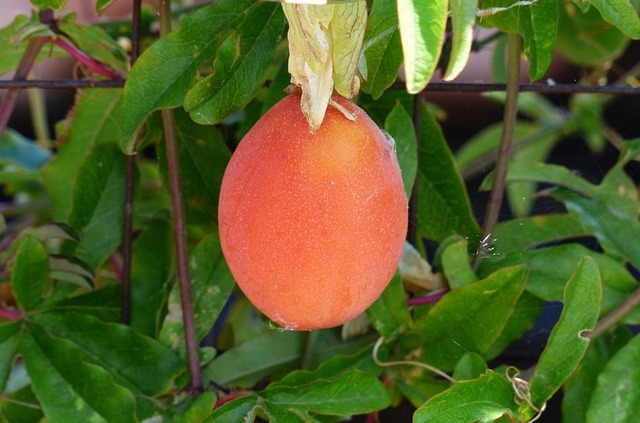How many of us know how an apple got its name or an onion? We take these words for granted because they roll off the tongue, but most of us don't know where they come from.
Even the words "fruit" and "vegetable" are thrown around as if they came out of nowhere. In fact, the word "fruit" comes from the Latin word fruit, meaning "pleasure" or "delight," as well as "product" or "harvest." "Vegetable," on the other hand, comes from the Proto-Indo-European root weg- , meaning "strength" or "liveliness"; hence we also find weg- in the words "wakefulness", "strength" and other related words.
Out of the blue, here are ten etymologies of fruits and vegetables we see every day.
10. Raspberry

It is not exactly known where the raspberry got its name. But an earlier (1540s) form,raspberry , may be a clue pointing to raspis (from Anglo-Latin Vinum Raspeis ), a type of sweet pink wine.
Alternatively, like many words in English, it may have Germanic origins. One theory suggests that it comes from Old Walloon, a Belgian-French language in which "thicket" (the habitat associated with the berry) israspoie . Or it could be related to the English word rasp , meaning rough, referring to the appearance of the berry. (Incidentally, other than "apple," "berry" is the only word for fruit that is native to English.)
In any case, "to blow a raspberry" (a farting sound made through closed lips) is only tangentially related, as a shortening of "raspberry pie," which rhymes with "fart."
9. Cabbage

In the late 14th century, the English called cabbage by an old northern French word caboche , meaning "head" (from Latin/Proto-Indo-European caput / kaput ). This makes sense, given that we still call a single cabbage a "head." But this association with heads is not supported by other European languages. In Italian, cabbage is cavalo , and in Spanish - col , as in Old French chol and French chou — all from the Latin word "cabbage", caulis . Even Germanic languages share this Latin root. In German it is Kohl , in Swedish kål, and in Dutch cool (Hence "cabbage" and "cabbage salad.")
So perhaps "cabbage" in English comes from the Latinboce , meaning "hump" or "bump", with an expressive prefix ca- However, when you hold a cabbage, it looks like a head.
8. Potatoes

"Potato" comes from Taínobatata , without being mentioned before. This is because it was not until the mid-16th century that Europe even heard of this root vegetable, despite its importance today . However, sweet potato was not a regular white potato; it referred specifically to the sweet potato. Batata or potato , meaning "sweet potato," was the first variety , which found its way onto European plates, where visitors praised it as “fine marzipan” and superior to “our passeneps or carriages.”
When Sir Walter Raleigh introduced the white potato to the British Isles, a new name was obviously needed. Instead of using papa From the Andean language Quechua, as it was to the Spanish, the English called it the "Virginia potato" after the Raleigh colony in the New World. In any case, it was not a hit like its sweet orange cousin. So it also became known as the "bastard potato," reflecting its supposed inferiority. For a time, it was grown as an ornamental plant or fed to sailors as a cheap food.
In Europe, potatoes were called "earth apples": pomme de terre in French and erdapfel in German. Other German words for potatoes include potatoes (from Italian tartufolo , which means "truffle") and ground birch , which means "main pear".
7. Kiwi

The kiwi was unknown in the West until 1904, at least as a crop. That's when the U.S. Department of Agriculture imported the seeds and domesticated the fruit, which was then known asyang tao . Around the same time, a New Zealander returning home from China gave the seeds to some neighbors with fruit orchards, and they flourished—much better than in the U.S. New Zealand, and in particular the Bay of Plenty, had better growing conditions. yang tao .
Renaming the fruit “Chinese gooseberries,” New Zealand exporters shipped their first 100 cases to San Francisco. But the name was problematic for two reasons. First, in the American imagination, “Chinese” was synonymous with “communist,” and “communist” was synonymous with “evil.” Second, gooseberries were susceptible to anthracnose, and although kiwifruit had nothing in common with true gooseberries, the name bothered American importers. Its replacement, “melon,” didn’t work either, because melons were subject to high tariffs. The name “kiwi” was born when a U.S. importer asked New Zealand exporters to find a short Maori term that would immediately bring to mind New Zealand.Kiwi was already a slang term for a New Zealander, from the Maori for a local flightless bird.
Once the name was established, kiwifruit became the "fruit of the future," an important garnish in nouvelle cuisine and pastry shops around the world, despite the French calling it souris vegetale , which means "vegetable mice."
6. Squash

Squash, a staple food of Native Americans, gets its name from askutasquash — a Narragansett (Algonquian) word meaning "can be eaten raw or uncooked." ( Askut (meaning "green," "raw," or "uncooked," and "asquash" means "eaten.") Considering how few of us have ever thought about eating pumpkin raw, this might seem like a mistake. But don't knock it 'til you try it; raw pumpkin is surprisingly delicious.
That doesn’t mean pre-Columbian Americans only ate it raw. Cultivated as far back as 10,000 years ago, the pumpkin had a variety of uses. Not only was its flesh roasted, boiled, or preserved in syrup, but its shoots, leaves, flowers, and seeds could also be eaten. Even the hard outer shells, which come in a variety of colors including orange and blue, could be scooped out and used as containers.
Despite their deliciousness, colonists thought pumpkins were beneath them… until the harsh New England winter. Then they were greedily baked as a comforting staple with lard, maple syrup, and honey.
5. Onion

The word "onion" dates back to the early 12th century, when it appeared as ungeon , oinyon And union or in Irish as inniun and Welsh as wynwyn Before that it was Old English. ynne . All words originally came from Latin union , denoting a type of onion or pearl, based on the resemblance of a string of pearls to a string of onions. The Latin word also means "unity." In this context, it refers to the way onions grow in successive layers — unlike, say, garlic, which divides into individual cloves.
A more common Latin word for onion was cepa , hence the Spanish cebolla , although in Latin it had a hard "c" or "k" sound. It is also the origin of the word "chive", which in English was originally called cives - pronounced with a soft "c", as in French.
4. Coconut

The coconut is an ancient crop that was first domesticated by islanders in Southeast Asia and then migrated to the Pacific Ocean 4,500 years ago. Its name in these regions is usually a variant of niu In Europe, coconut was originally called nux indica , "Indian nut" because the fruit was first discovered in India. However, the Indians themselves mostly knew it as naariyal So where did "coconut" come from?
As innocent as it may sound, the name actually comes from the coconut's repulsive appearance — at least to Portuguese colonists. The three "holes" at the base, resembling eyes and an open mouth, apparently reminded them of the Obiberian folklore "ghost monster" Coco, who kidnapped and devoured naughty children. . (To be honest, coconuts are scary: they are said to kill more people than sharks.)
The "nut" part appeared later, in the 1610s, and became part of its name in taxonomy:Cocos nucifera This, of course, despite the fact that it is not a nut, but a really very hard fruit.
3. Apple

In Old English Eppel referred to any fruit, not just apples. It comes from the Proto-Germanic *ap(a)laz , just like Old Norse eple , Old High German apful and Old Irish ubull It was only in the 12th century that England received the "fruit" of Latin through French. But æppel continued to be used, appearing in eorþæppla ("earth apples"), which means "cucumbers", fingeræppla , meaning "dates," and, in 15th-century Middle English, apple of paradise , meaning "banana." Even in the 17th century, it remained a general term for fruits and nuts.
This explains how the unspecified biblical "forbidden fruit" automatically became an apple, when it was most likely meant to be a pomegranate. In Islam, it is believed to be wheat, alluding to the Fall represented by agriculture.
Interestingly, given the biblical connection, one etymology suggests that the Proto-Germanic root of the word for “apple” actually comes from the Semitic languages of Ethiopia. According to this theory, “apple” began as"abal ", meaning "genitals" or "testicles".
2. Eggplants

Why is a vegetable (or fruit, really) that doesn't look anything like an egg called an eggplant? The answer is surprisingly simple: it used to be. Europeans came up with the name "eggplant" in the 18th century because its fruits were the size and shape of goose eggs. Even the color was similar—off-white or yellow instead of deep purple.
This may surprise those who think that “eggplant” is an American word. In fact, a more authentic American term is “guinea squash,” which is what the eggplant has been known by since the 18th century, when it was first brought from West Africa.
In Britain it is called aubergine, which entered the English language through the Arabic word al-badinjan from Sanskrit vatimgana , meaning "anti-wind vegetable." Apparently it was thought to relieve flatulence.
1. Passion fruit

While passion fruit's beauty sells itself, its name is an obvious selling point, exuding tropical appeal and feeling. In reality, however, it couldn't be more chaste.
"Passion" in this case means the Passion of Christ, that is, the suffering and execution of the prophet. Thanks to Christian missionaries, its flower became known in its native South America as flower of the cinquefoils or "flower of five wounds," because it was used to tell the story of the crucifixion. The five stamens, they said, represented the five wounds Christ received—one in each hand and foot, and one in the side.
Other parts of the flower also played a role: the three marks represented the nails driven into the cross; the ovary represented either the vinegar-soaked sponge offered to Christ for relief or the hammer used to drive the nails; and the crown represented the crown of thorns. The ten petals, meanwhile, represented the apostles (except Peter and Judas), and their purple color (traditionally associated with Lent) was attributed to the blood of Christ falling from heaven.













Оставить Комментарий